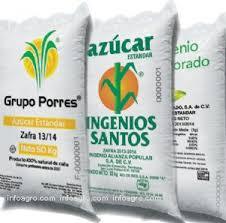Edited, memorised or added to reading queue
on 25-Feb-2019 (Mon)
Do you want BuboFlash to help you learning these things? Click here to log in or create user.
Flashcard 1444434808076
| status | not learned | measured difficulty | 37% [default] | last interval [days] | |||
|---|---|---|---|---|---|---|---|
| repetition number in this series | 0 | memorised on | scheduled repetition | ||||
| scheduled repetition interval | last repetition or drill |
Flashcard 1452569922828
| status | not learned | measured difficulty | 37% [default] | last interval [days] | |||
|---|---|---|---|---|---|---|---|
| repetition number in this series | 0 | memorised on | scheduled repetition | ||||
| scheduled repetition interval | last repetition or drill |
Parent (intermediate) annotation
Open itAt some level, most people feel that few people truly get who they are. Whether or not this is true, it’s a mindset that motivates us every day.
Original toplevel document (pdf)
cannot see any pdfsFlashcard 1738057583884
| status | not learned | measured difficulty | 37% [default] | last interval [days] | |||
|---|---|---|---|---|---|---|---|
| repetition number in this series | 0 | memorised on | scheduled repetition | ||||
| scheduled repetition interval | last repetition or drill |
Parent (intermediate) annotation
Open itThe GIPS standards are a practitioner-driven set of ethical principles that establish a standardized, industry-wide approach for investment firms to follow in calculating and presenting their historical investment results to prospective clients. The GIPS s
Original toplevel document
Reading 4 Introduction to the Global Investment Performance Standards (GIPS®)l investment management firms was problematic. For example, a pension fund seeking to hire an investment management firm might receive proposals from several firms, all using different methodologies for calculating their results. <span>The GIPS standards are a practitioner-driven set of ethical principles that establish a standardized, industry-wide approach for investment firms to follow in calculating and presenting their historical investment results to prospective clients. The GIPS standards ensure fair representation and full disclosure of investment performance. In other words, the GIPS standards lead investment management firms to avoid misrepresentations of performance and to communicate all relevant information that prospective clients should know in order to evaluate past results. <span><body><html>
Flashcard 1750248066316
| status | not learned | measured difficulty | 37% [default] | last interval [days] | |||
|---|---|---|---|---|---|---|---|
| repetition number in this series | 0 | memorised on | scheduled repetition | ||||
| scheduled repetition interval | last repetition or drill |
Parent (intermediate) annotation
Open itThe most generic definition of money is that it is any generally accepted medium of exchange. A medium of exchange is any asset that can be used to purchase goods and services or to repay debts. Money can thus eliminate the debilitating double coincidence of the “wants” problem
Original toplevel document
Money: the price of oranges in terms of pears; of pears in terms of bread; of bread in terms of milk; or of milk in terms of oranges. A barter economy has no common measure of value that would make multiple transactions simple. <span>2.1.1. The Functions of Money The most generic definition of money is that it is any generally accepted medium of exchange. A medium of exchange is any asset that can be used to purchase goods and services or to repay debts. Money can thus eliminate the debilitating double coincidence of the “wants” problem that exists in a barter economy. When this medium of exchange exists, a farmer wishing to sell wheat for wine does not need to identify a wine producer in search of wheat. Instead, he can sell wheat to those who want wheat in exchange for money. The farmer can then exchange this money for wine with a wine producer, who in turn can exchange that money for the goods or services that she wants. However, for money to act as this liberating medium of exchange, it must possess certain qualities. It must: be readily acceptable, have a known value, be easily divisible, have a high value relative to its weight, and be difficult to counterfeit. Qualities (i) and (ii) are closely related; the medium of exchange will only be acceptable if it has a known value. If the medium of exchange has quality (iii), then it can be used to purchase items of relatively little value and of relatively large value with equal ease. Having a high value relative to its weight is a practical convenience, meaning that people can carry around sufficient wealth for their transaction needs. Finally, if the medium of exchange can be counterfeited easily, then it would soon cease to have a value and would not be readily acceptable as a means of effecting transactions; in other words, it would not satisfy qualities (i) and (ii). Given the qualities that money needs to have, it is clear why precious metals (particularly gold and silver) often fulfilled the role of medium of exchange in early societies, and as recently as the early part of the twentieth century. Precious metals were acceptable as a medium of exchange because they had a known value, were easily divisible, had a high value relative to their weight, and could not be easily counterfeited. Thus, precious metals were capable of acting as a medium of exchange. But they also fulfilled two other useful functions that are essential for the characteristics of money. In a barter economy, it is difficult to store wealth from one year to the next when one’s produce is perishable, or indeed, if it requires large warehouses in which to store it. Because precious metals like gold had a high value relative to their bulk and were not perishable, they could act as a store of wealth . However, their ability to act as a store of wealth not only depended on the fact that they did not perish physically over time, but also on the belief that others would always value precious metals. The value from year to year of precious metals depended on people’s continued demand for them in ornaments, jewellery, and so on. For example, people were willing to use gold as a store of wealth because they believed that it would remain highly valued. However, if gold became less valuable to people relative to other goods and services year after year it would not be able to fulfill its role as a store of value , and as such might also lose its status as a medium of exchange. Another important characteristic of money is that it can be used as a universal unit of account. As such, it can create a single unitary measure of value for all goods and services. In an economy where gold and silver are the accepted medium of exchange, all prices, debts, and wealth can be recorded in terms of their gold or silver coin exchange value. Money, in its role as a unit of account, drastically reduces the number of prices in an economy compared to barter, which requires that prices be established for a good in terms of all other goods for which it might be exchanged. In summary, money fulfills three important functions, it: acts as a medium of exchange; provides individuals with a way of storing wealth; and provides society with a convenient measure of value and unit of account. 2.1.2. Paper Money and the Money Creation Process Although precious metals like gold and silver fulfilled the required functions of money
Flashcard 1751034760460
| status | not learned | measured difficulty | 37% [default] | last interval [days] | |||
|---|---|---|---|---|---|---|---|
| repetition number in this series | 0 | memorised on | scheduled repetition | ||||
| scheduled repetition interval | last repetition or drill |
Parent (intermediate) annotation
Open itThe two main types of long-lived assets with costs that are typically not allocated over time are land, which is not depreciated, and those intangible assets with indefinite useful lives.
Original toplevel document
Reading 29 Long-Lived Assets IntroductionLong-lived assets , also referred to as non-current assets or long-term assets, are assets that are expected to provide economic benefits over a future period of time, typically greater than one year.1 Long-lived assets may be tangible, intangible, or financial assets. Examples of long-lived tangible assets, typically referred to as property, plant, and equipment and sometimes as fixed assets, include land, buildings, furniture and fixtures, machinery and equipment, and vehicles; examples of long-lived intangible assets (assets lacking physical substance) include patents and trademarks; and examples of long-lived financial assets include investments in equity or debt securities issued by other companies. The scope of this reading is limited to long-lived tangible and intangible assets (hereafter, referred to for simplicity as long-lived assets). The first issue in accounting for a long-lived asset is determining its cost at acquisition. The second issue is how to allocate the cost to expense over time. The costs of most long-lived assets are capitalised and then allocated as expenses in the profit or loss (income) statement over the period of time during which they are expected to provide economic benefits. The two main types of long-lived assets with costs that are typically not allocated over time are land, which is not depreciated, and those intangible assets with indefinite useful lives. Additional issues that arise are the treatment of subsequent costs incurred related to the asset, the use of the cost model versus the revaluation model, unexpected declines in the value of the asset, classification of the asset with respect to intent (for example, held for use or held for sale), and the derecognition of the asset. This reading is organised as follows. Section 2 describes and illustrates accounting for the acquisition of long-lived assets, with particular attention to the impact of ca
Flashcard 1751044721932
| status | not learned | measured difficulty | 37% [default] | last interval [days] | |||
|---|---|---|---|---|---|---|---|
| repetition number in this series | 0 | memorised on | scheduled repetition | ||||
| scheduled repetition interval | last repetition or drill |
Parent (intermediate) annotation
Open itEndowment funds are typically funded entirely by donations that are deductible for the donors.
Original toplevel document
Endowment Fund<span>What is an 'Endowment Fund' An endowment fund is an investment fund established by a foundation that makes consistent withdrawals from invested capital. The capital in endowment funds, often used by universities, nonprofit organizations, churches and hospitals, is generally utilized for specific needs or to further a company’s operating process. Endowment funds are typically funded entirely by donations that are deductible for the donors. BREAKING DOWN 'Endowment Fund' Financial endowments are typically structured so the principal amount invested remains intact, while investment income
Flashcard 1751048654092
| status | not learned | measured difficulty | 37% [default] | last interval [days] | |||
|---|---|---|---|---|---|---|---|
| repetition number in this series | 0 | memorised on | scheduled repetition | ||||
| scheduled repetition interval | last repetition or drill |
Parent (intermediate) annotation
Open itIf market prices do not fully incorporate information, then opportunities may exist to make a profit from the gathering and processing of information.
Original toplevel document
Reading 46 Market Efficiency (Intro)Market efficiency concerns the extent to which market prices incorporate available information. If market prices do not fully incorporate information, then opportunities may exist to make a profit from the gathering and processing of information. The subject of market efficiency is, therefore, of great interest to investment managers, as illustrated in Example 1. EXAMPLE 1 Market Efficiency and Active Manager Selection The chief investment officer (CIO) of a major university endowment fund has listed eight steps in the active manager selection process that can be applied both to traditional investments (e.g., common equity and fixed-income securities) and to alternative investments (e.g., private equity, hedge funds, and real assets). The first step specified is the evaluation of market opportunity: What is the opportunity and why is it there? To answer this question we start by studying capital markets and the types of managers operating within those markets. We identify market inefficiencies and try to understand their causes, such as regulatory structures or behavioral biases. We can rule out many broad groups of managers and strategies by simply determining that the degree of market inefficiency necessary to support a strategy is implausible. Importantly, we consider the past history of active returns meaningless unless we understand why markets will allow those active returns to continue into the future.1 The CIO’s description underscores the importance of not assuming that past active returns that might be found in a historical dataset will repeat themselves in the future. Active returns refer to returns earned by strategies that do not assume that all information is fully reflected in market prices. Governments and market regulators also care about the extent to which market prices incorporate information. Efficient markets imply informative prices—prices that accurately reflect available information about fundamental values. In market-based economies, market prices help determine which companies (and which projects) obtain capital. If these prices do not efficiently incorporate information about a company’s prospects, then it is possible that funds will be misdirected. By contrast, prices that are informative help direct scarce resources and funds available for investment to their highest-valued uses.2 Informative prices thus promote economic growth. The efficiency of a country’s capital markets (in which businesses raise financing) is an important characteristic of a well-functioning financial system. The remainder of this reading is organized as follows. Section 2 provides specifics on how the efficiency of an asset market is described and discusses the factors affectin
Flashcard 1751183658252
| status | not learned | measured difficulty | 37% [default] | last interval [days] | |||
|---|---|---|---|---|---|---|---|
| repetition number in this series | 0 | memorised on | scheduled repetition | ||||
| scheduled repetition interval | last repetition or drill |
Parent (intermediate) annotation
Open itESG integration is the practice of considering environmental, social, and governance factors in the investment process. It can be implemented across all asset classes.
Original toplevel document
Subject 9. ESG Considerations for InvestorsESG integration is the practice of considering environmental, social, and governance factors in the investment process. It can be implemented across all asset classes. ESG Factors in Investment Analysis Environmental factors include natural resource management, pollution prevention, water conservation, energy efficiency and
Flashcard 1751190473996
| status | not learned | measured difficulty | 37% [default] | last interval [days] | |||
|---|---|---|---|---|---|---|---|
| repetition number in this series | 0 | memorised on | scheduled repetition | ||||
| scheduled repetition interval | last repetition or drill |
Parent (intermediate) annotation
Open itValuation is particularly important in active equity portfolio management, which aims to improve on the return–risk trade-off of a portfolio’s benchmark by identifying mispriced securities.
Original toplevel document
Reading 49 Equity Valuation: Concepts and Basic Tools (Intro)Analysts gather and process information to make investment decisions, including buy and sell recommendations. What information is gathered and how it is processed depend on the analyst and the purpose of the analysis. Technical analysis uses such information as stock price and trading volume as the basis for investment decisions. Fundamental analysis uses information about the economy, industry, and company as the basis for investment decisions. Examples of fundamentals are unemployment rates, gross domestic product (GDP) growth, industry growth, and quality of and growth in company earnings. Whereas technical analysts use information to predict price movements and base investment decisions on the direction of predicted change in prices, fundamental analysts use information to estimate the value of a security and to compare the estimated value to the market price and then base investment decisions on that comparison. This reading introduces equity valuation models used to estimate the intrinsic value (synonym: fundamental value ) of a security; intrinsic value is based on an analysis of investment fundamentals and characteristics. The fundamentals to be considered depend on the analyst’s approach to valuation. In a top-down approach, an analyst examines the economic environment, identifies sectors that are expected to prosper in that environment, and analyzes securities of companies from previously identified attractive sectors. In a bottom-up approach, an analyst typically follows an industry or industries and forecasts fundamentals for the companies in those industries in order to determine valuation. Whatever the approach, an analyst who estimates the intrinsic value of an equity security is implicitly questioning the accuracy of the market price as an estimate of value. Valuation is particularly important in active equity portfolio management, which aims to improve on the return–risk trade-off of a portfolio’s benchmark by identifying mispriced securities. This reading is organized as follows. Section 2 discusses the implications of differences between estimated value and market price. Section 3 introduces three major categor
Flashcard 1751192833292
| status | not learned | measured difficulty | 37% [default] | last interval [days] | |||
|---|---|---|---|---|---|---|---|
| repetition number in this series | 0 | memorised on | scheduled repetition | ||||
| scheduled repetition interval | last repetition or drill |
Parent (intermediate) annotation
Open itValuation is particularly important in active equity portfolio management, which aims to improve on the return–risk trade-off of a portfolio’s benchmark by identifying mispriced securities.
Original toplevel document
Reading 49 Equity Valuation: Concepts and Basic Tools (Intro)Analysts gather and process information to make investment decisions, including buy and sell recommendations. What information is gathered and how it is processed depend on the analyst and the purpose of the analysis. Technical analysis uses such information as stock price and trading volume as the basis for investment decisions. Fundamental analysis uses information about the economy, industry, and company as the basis for investment decisions. Examples of fundamentals are unemployment rates, gross domestic product (GDP) growth, industry growth, and quality of and growth in company earnings. Whereas technical analysts use information to predict price movements and base investment decisions on the direction of predicted change in prices, fundamental analysts use information to estimate the value of a security and to compare the estimated value to the market price and then base investment decisions on that comparison. This reading introduces equity valuation models used to estimate the intrinsic value (synonym: fundamental value ) of a security; intrinsic value is based on an analysis of investment fundamentals and characteristics. The fundamentals to be considered depend on the analyst’s approach to valuation. In a top-down approach, an analyst examines the economic environment, identifies sectors that are expected to prosper in that environment, and analyzes securities of companies from previously identified attractive sectors. In a bottom-up approach, an analyst typically follows an industry or industries and forecasts fundamentals for the companies in those industries in order to determine valuation. Whatever the approach, an analyst who estimates the intrinsic value of an equity security is implicitly questioning the accuracy of the market price as an estimate of value. Valuation is particularly important in active equity portfolio management, which aims to improve on the return–risk trade-off of a portfolio’s benchmark by identifying mispriced securities. This reading is organized as follows. Section 2 discusses the implications of differences between estimated value and market price. Section 3 introduces three major categor
Flashcard 1751196765452
| status | not learned | measured difficulty | 37% [default] | last interval [days] | |||
|---|---|---|---|---|---|---|---|
| repetition number in this series | 0 | memorised on | scheduled repetition | ||||
| scheduled repetition interval | last repetition or drill |
Parent (intermediate) annotation
Open itThe cash-based information provided by the cash flow statement contrasts with the accrual-based information from the income statement. For example, the income statement reflects revenues when earned rather than when cash is collected; in contrast, the cash flow statement reflects cash receipts when collected as opposed
Original toplevel document
Reading 26 Understanding Cash Flow Statements IntroductionThe cash flow statement provides information about a company’s cash receipts and cash payments during an accounting period. The cash-based information provided by the cash flow statement contrasts with the accrual-based information from the income statement. For example, the income statement reflects revenues when earned rather than when cash is collected; in contrast, the cash flow statement reflects cash receipts when collected as opposed to when the revenue was earned. A reconciliation between reported income and cash flows from operating activities provides useful information about when, whether, and how a company is able to generate cash from its operating activities. Although income is an important measure of the results of a company’s activities, cash flow is also essential. As an extreme illustration, a hypothetical company that makes all sales on account, without regard to whether it will ever collect its accounts receivable, would report healthy sales on its income statement and might well report significant income; however, with zero cash inflow, the company would not survive. The cash flow statement also provides a reconciliation of the beginning and ending cash on the balance sheet. In addition to information about cash generated (or, alternatively, cash used) in operating activities, the cash flow statement provides information about cash provided (or used) in a company’s investing and financing activities. This information allows the analyst to answer such questions as: Does the company generate enough cash from its operations to pay for its new investments, or is the company relying on new debt issuance to finance them? Does the company pay its dividends to common stockholders using cash generated from operations, from selling assets, or from issuing debt? Answers to these questions are important because, in theory, generating cash from operations can continue indefinitely, but generating cash from selling assets, for example, is possible only as long as there are assets to sell. Similarly, generating cash from debt financing is possible only as long as lenders are willing to lend, and the lending decision depends on expectations that the company will ultimately have adequate cash to repay its obligations. In summary, information about the sources and uses of cash helps creditors, investors, and other statement users evaluate the company’s liquidity, solvency, and financial flexibility. This reading explains how cash flow activities are reflected in a company’s cash flow statement. The reading is organized as follows. Section 2 describes the components an
Flashcard 1751211183372
| status | not learned | measured difficulty | 37% [default] | last interval [days] | |||
|---|---|---|---|---|---|---|---|
| repetition number in this series | 0 | memorised on | scheduled repetition | ||||
| scheduled repetition interval | last repetition or drill |
Parent (intermediate) annotation
Open itProponents of classified or staggered boards argue that by staggering the election of directors, a certain level of continuity and skill is maintained.
Original toplevel document
Subject 5. Board of Directors and CommitteesComposition of the Board of Directors A board of directors is the central pillar of the governance structure, serves as the link between shareholders and managers, and acts as the shareholders' internal monitoring tool within the company. The structure and composition of a board of directors vary across countries and companies. The number of directors may vary, and the board typically includes a mix of expertise levels, backgrounds, and competencies. Board members must have extensive experience in business, education, the professions and/or public service so they can make informed decisions about the company's future. If directors lack the skills, knowledge and expertise to conduct a meaningful review of the company's activities, and are unable to conduct in-depth evaluations of the issues affecting the company's business, they are more likely to defer to management when making decisions. Executive (internal) directors are employed by the company and are typically members of senior management. Non-executive (external) directors have limited involvement in daily operations but serve an important oversight role. In a classified or staggered board, directors are typically elected in two or more classes, serving terms greater than one year. Proponents argue that by staggering the election of directors, a certain level of continuity and skill is maintained. However, staggered terms make it more difficult for shareholders to make fundamental changes to the composition and behavior of the board and could result in a permanent impairment of long-term shareholder value. Functions and Responsibilities of the Board Two primary duties of a board of directors are duty of care and duty of loyalty. Among other responsibilities, the
Flashcard 1751216164108
| status | not learned | measured difficulty | 37% [default] | last interval [days] | |||
|---|---|---|---|---|---|---|---|
| repetition number in this series | 0 | memorised on | scheduled repetition | ||||
| scheduled repetition interval | last repetition or drill |
Parent (intermediate) annotation
Open itA drawbacks to a barter economy is that the exchange of goods for other goods would require both economic agents in the transaction to want what the other is selling. This means that there has to be a double coincidence of wants
Original toplevel document
MoneyTo understand the nature, role, and development of money in modern economies, it is useful to think about a world without money—where to purchase any good or service, an individual would have to “pay” with another good or service. An economy where such economic agents as households, corporations, and even governments pay for goods and services in this way is known as a barter economy . There are many drawbacks to such an economy. First, the exchange of goods for other goods (or services) would require both economic agents in the transaction to want what the other is selling. This means that there has to be a double coincidence of wants . It might also be impossible to undertake transactions where the goods are indivisible—that is, where one agent wishes to buy a certain amount of another’s goods, but that agent only has one indivisible unit of another good that is worth more than the good that the agent is trying to buy. Another problem occurs if economic agents do not wish to exchange all of their goods on other goods and services. This may not be a problem, however, when the goods they have to sell can be stored safely so that they retain their value for the future. But if these goods are perishable, they will not be able to store value for their owner. Finally, in a barter economy, there are many measures of value: the price of oranges in terms of pears; of pears in terms of bread; of bread in terms of milk; or of milk in terms of oranges. A barter economy has no common measure of value that would make multiple transactions simple. 2.1.1. The Functions of Money The most generic definition of money is that it is any generally accepted medium of exchange. A medium of exchange is an
Flashcard 1751218523404
| status | not learned | measured difficulty | 37% [default] | last interval [days] | |||
|---|---|---|---|---|---|---|---|
| repetition number in this series | 0 | memorised on | scheduled repetition | ||||
| scheduled repetition interval | last repetition or drill |
Parent (intermediate) annotation
Open itThe ability of precious metals, like gold, to act as a store of wealth not only depended on the fact that they did not perish physically over time, but also on the belief that others would always value precious metals.
Original toplevel document
Money: the price of oranges in terms of pears; of pears in terms of bread; of bread in terms of milk; or of milk in terms of oranges. A barter economy has no common measure of value that would make multiple transactions simple. <span>2.1.1. The Functions of Money The most generic definition of money is that it is any generally accepted medium of exchange. A medium of exchange is any asset that can be used to purchase goods and services or to repay debts. Money can thus eliminate the debilitating double coincidence of the “wants” problem that exists in a barter economy. When this medium of exchange exists, a farmer wishing to sell wheat for wine does not need to identify a wine producer in search of wheat. Instead, he can sell wheat to those who want wheat in exchange for money. The farmer can then exchange this money for wine with a wine producer, who in turn can exchange that money for the goods or services that she wants. However, for money to act as this liberating medium of exchange, it must possess certain qualities. It must: be readily acceptable, have a known value, be easily divisible, have a high value relative to its weight, and be difficult to counterfeit. Qualities (i) and (ii) are closely related; the medium of exchange will only be acceptable if it has a known value. If the medium of exchange has quality (iii), then it can be used to purchase items of relatively little value and of relatively large value with equal ease. Having a high value relative to its weight is a practical convenience, meaning that people can carry around sufficient wealth for their transaction needs. Finally, if the medium of exchange can be counterfeited easily, then it would soon cease to have a value and would not be readily acceptable as a means of effecting transactions; in other words, it would not satisfy qualities (i) and (ii). Given the qualities that money needs to have, it is clear why precious metals (particularly gold and silver) often fulfilled the role of medium of exchange in early societies, and as recently as the early part of the twentieth century. Precious metals were acceptable as a medium of exchange because they had a known value, were easily divisible, had a high value relative to their weight, and could not be easily counterfeited. Thus, precious metals were capable of acting as a medium of exchange. But they also fulfilled two other useful functions that are essential for the characteristics of money. In a barter economy, it is difficult to store wealth from one year to the next when one’s produce is perishable, or indeed, if it requires large warehouses in which to store it. Because precious metals like gold had a high value relative to their bulk and were not perishable, they could act as a store of wealth . However, their ability to act as a store of wealth not only depended on the fact that they did not perish physically over time, but also on the belief that others would always value precious metals. The value from year to year of precious metals depended on people’s continued demand for them in ornaments, jewellery, and so on. For example, people were willing to use gold as a store of wealth because they believed that it would remain highly valued. However, if gold became less valuable to people relative to other goods and services year after year it would not be able to fulfill its role as a store of value , and as such might also lose its status as a medium of exchange. Another important characteristic of money is that it can be used as a universal unit of account. As such, it can create a single unitary measure of value for all goods and services. In an economy where gold and silver are the accepted medium of exchange, all prices, debts, and wealth can be recorded in terms of their gold or silver coin exchange value. Money, in its role as a unit of account, drastically reduces the number of prices in an economy compared to barter, which requires that prices be established for a good in terms of all other goods for which it might be exchanged. In summary, money fulfills three important functions, it: acts as a medium of exchange; provides individuals with a way of storing wealth; and provides society with a convenient measure of value and unit of account. 2.1.2. Paper Money and the Money Creation Process Although precious metals like gold and silver fulfilled the required functions of money
Flashcard 1751220882700
| status | not learned | measured difficulty | 37% [default] | last interval [days] | |||
|---|---|---|---|---|---|---|---|
| repetition number in this series | 0 | memorised on | scheduled repetition | ||||
| scheduled repetition interval | last repetition or drill |
Parent (intermediate) annotation
Open itSecurity market indexes form the basis for new investment products.
Original toplevel document
Reading 45 Security Market Indexes (Intro)Investors gather and analyze vast amounts of information about security markets on a continual basis. Because this work can be both time consuming and data intensive, investors often use a single measure that consolidates this information and reflects the performance of an entire security market. Security market indexes were first introduced as a simple measure to reflect the performance of the US stock market. Since then, security market indexes have evolved into important multi-purpose tools that help investors track the performance of various security markets, estimate risk, and evaluate the performance of investment managers. They also form the basis for new investment products. in·dex, noun (pl. in·dex·es or in·di·ces) Latin indic-, index, from indicare to indicate: an indicator, sign, or measure of something. ORIGIN OF MARKET INDEXES Investors had access to regularly published data on individual security prices in London as early as 1698, but nearly 200 years passed before they had access to a simple indicator to reflect security market information.1 To give readers a sense of how the US stock market in general performed on a given day, publishers Charles H. Dow and Edward D. Jones introduced the Dow Jones Average, the world’s first security market index, in 1884.2 The index, which appeared in The Customers’ Afternoon Letter, consisted of the stocks of nine railroads and two industrial companies. It eventually became the Dow Jones Transportation Average.3Convinced that industrial companies, rather than railroads, would be “the great speculative market” of the future, Dow and Jones introduced a second index in May 1896—the Dow Jones Industrial Average (DJIA). It had an initial value of 40.94 and consisted of 12 stocks from major US industries.4 , 5 Today, investors can choose from among thousands of indexes to measure and monitor different security markets and asset classes. This reading is organized as follows. Section 2 defines a security market index and explains how to calculate the price return and total return of an index for a single per
Flashcard 1751229009164
| status | not learned | measured difficulty | 37% [default] | last interval [days] | |||
|---|---|---|---|---|---|---|---|
| repetition number in this series | 0 | memorised on | scheduled repetition | ||||
| scheduled repetition interval | last repetition or drill |
Parent (intermediate) annotation
Open itInventory may represent a significant asset on Merchandising and manufacturing companies’ balance sheets.
Original toplevel document
Reading 28 Inventories IntroductionMerchandising and manufacturing companies generate revenues and profits through the sale of inventory. Further, inventory may represent a significant asset on these companies’ balance sheets. Merchandisers (wholesalers and retailers) purchase inventory, ready for sale, from manufacturers and thus account for only one type of inventory—finished goods inventory. Manufacturers, however, purchase raw materials from suppliers and then add value by transforming the raw materials into finished goods. They typically classify inventory into three different categories: raw materials, work in progress, and finished goods. Work-in-progress inventories have started the conversion process from raw materials but are not yet finished goods ready for sale. Manufacturers may report either the separate carrying amounts of their raw materials, work-in-progress, and finished goods inventories on the balance sheet or simply the total inventory amount. If the latter approach is used, the company must then disclose the carrying amounts of its raw materials, work-in-progress, and finished goods inventories in a footnote to the financial statements. Inventories and cost of sales (cost of goods sold)3 are significant items in the financial statements of many companies. Comparing the performance of these companies is challenging because of the allowable choices for valuing inventories: Differences in the choice of inventory valuation method can result in significantly different amounts being assigned to inventory and cost of sales. Financial statement analysis would be much easier if all companies used the same inventory valuation method or if inventory price levels remained constant over time. If there was no inflation or deflation with respect to inventory costs and thus unit costs were unchanged, the choice of inventory valuation method would be irrelevant. However, inventory price levels typically do change over time. International Financial Reporting Standards (IFRS) permit the assignment of inventory costs (costs of goods available for sale) to inventories and cost of sales by three cost formulas: specific identification, first-in, first-out (FIFO), and weighted average cost.4 US generally accepted accounting principles (US GAAP) allow the same three inventory valuation methods, referred to as cost flow assumptions in US GAAP, but also include a fourth method called last-in, first-out (LIFO).5 The choice of inventory valuation method affects the allocation of the cost of goods available for sale to ending inventory and cost of sales. Analysts must understand the various inventory valuation methods and the related impact on financial statements and financial ratios in order to evaluate a company’s performance over time and relative to industry peers. The company’s financial statements and related notes provide important information that the analyst can use in assessing the impact of the choice of inventory valuation method on financial statements and financial ratios. This reading is organized as follows: Section 2 discusses the costs that are included in inventory and the costs that are recognised as expenses in the period in which they
Flashcard 1751230844172
| status | not learned | measured difficulty | 37% [default] | last interval [days] | |||
|---|---|---|---|---|---|---|---|
| repetition number in this series | 0 | memorised on | scheduled repetition | ||||
| scheduled repetition interval | last repetition or drill |
Parent (intermediate) annotation
Open itSecurities that come out the process of Securitization are referred to generically as asset-backed securities (ABS); the pool of securitized assets from which the ABS’s cash flows are generated is called the collateral.
Original toplevel document
Reading 53 Introduction to Asset-Backed Securities (Intro)Previous readings examined risk characteristics of various fixed-income instruments and the relationships among maturity, coupon, and interest rate changes. This reading introduces an additional level of complexity—that of fixed-income instruments created through a process known as securitization . This process involves transferring ownership of assets from the original owners into a special legal entity. The special legal entity then issues securities backed by these assets, and the assets’ cash flows are used to pay interest and repay the principal owed to the holders of the securities. These securities are referred to generically as asset-backed securities (ABS); the pool of securitized assets from which the ABS’s cash flows are generated is called the collateral. Assets that are used to create ABS are called securitized assets . These assets are typically loans and receivables and include, among others, residential mortgage loans (mortgages), commercial mortgages, automobile (auto) loans, student loans, bank loans, accounts receivables, and credit card receivables. Advances and innovations in securitization have led to securities backed, or collateralized, by all kinds of income-yielding assets, including airport landing slots and toll roads. This reading discusses the benefits of securitization, describes securitization, and explains the investment characteristics of different types of ABS. The terminology regarding ABS varies by jurisdiction. Mortgage-backed securities (MBS) are ABS backed by a pool of mortgages, and a distinction is sometimes made between MBS and ABS backed by non-mortgage assets. This distinction is common in the United States, for example, where typically the term “mortgage-backed securities” refers to securities backed by high-quality real estate mortgages and the term “asset-backed securities” refers to securities backed by other types of assets. Because the US ABS market is the largest in the world, much of the discussion and many examples in this reading refer to the United States. Note, however, that many non-US investors hold US ABS, including MBS, in their portfolios. To underline the importance of securitization from a macroeconomic perspective, Section 2 discusses of the benefits of securitization for economies and financial markets. I
Flashcard 1751240281356
| status | not learned | measured difficulty | 37% [default] | last interval [days] | |||
|---|---|---|---|---|---|---|---|
| repetition number in this series | 0 | memorised on | scheduled repetition | ||||
| scheduled repetition interval | last repetition or drill |
Parent (intermediate) annotation
Open itPromote the integrity and viability of the global capital markets for the ultimate benefit of society.
Original toplevel document
Subject 2. The Six Components of the Code of Ethicsaking investment actions, and engaging in other professional activities. Practice and encourage others to practice in a professional and ethical manner that will reflect credit on themselves and the profession. <span>Promote the integrity and viability of the global capital markets for the ultimate benefit of society. Maintain and improve their professional competence and strive to maintain and improve the competence of other investment professionals. The Code of
Flashcard 1751245262092
| status | not learned | measured difficulty | 37% [default] | last interval [days] | |||
|---|---|---|---|---|---|---|---|
| repetition number in this series | 0 | memorised on | scheduled repetition | ||||
| scheduled repetition interval | last repetition or drill |
Parent (intermediate) annotation
Open itLong-lived assets , also referred to as non-current assets or long-term assets, are assets that are expected to provide economic benefits over a future period of time, typically greater than one year.
Original toplevel document
Reading 29 Long-Lived Assets IntroductionLong-lived assets , also referred to as non-current assets or long-term assets, are assets that are expected to provide economic benefits over a future period of time, typically greater than one year.1 Long-lived assets may be tangible, intangible, or financial assets. Examples of long-lived tangible assets, typically referred to as property, plant, and equipment and sometimes as fixed assets, include land, buildings, furniture and fixtures, machinery and equipment, and vehicles; examples of long-lived intangible assets (assets lacking physical substance) include patents and trademarks; and examples of long-lived financial assets include investments in equity or debt securities issued by other companies. The scope of this reading is limited to long-lived tangible and intangible assets (hereafter, referred to for simplicity as long-lived assets). The first issue in accounting for a long-lived asset is determining its cost at acquisition. The second issue is how to allocate the cost to expense over time. The costs of most long-lived assets are capitalised and then allocated as expenses in the profit or loss (income) statement over the period of time during which they are expected to provide economic benefits. The two main types of long-lived assets with costs that are typically not allocated over time are land, which is not depreciated, and those intangible assets with indefinite useful lives. Additional issues that arise are the treatment of subsequent costs incurred related to the asset, the use of the cost model versus the revaluation model, unexpected declines in the value of the asset, classification of the asset with respect to intent (for example, held for use or held for sale), and the derecognition of the asset. This reading is organised as follows. Section 2 describes and illustrates accounting for the acquisition of long-lived assets, with particular attention to the impact of ca
Flashcard 1751247621388
| status | not learned | measured difficulty | 37% [default] | last interval [days] | |||
|---|---|---|---|---|---|---|---|
| repetition number in this series | 0 | memorised on | scheduled repetition | ||||
| scheduled repetition interval | last repetition or drill |
Parent (intermediate) annotation
Open itLong-lived assets , also referred to as non-current assets or long-term assets, are assets that are expected to provide economic benefits over a future period of time, typically greater than one year.
Original toplevel document
Reading 29 Long-Lived Assets IntroductionLong-lived assets , also referred to as non-current assets or long-term assets, are assets that are expected to provide economic benefits over a future period of time, typically greater than one year.1 Long-lived assets may be tangible, intangible, or financial assets. Examples of long-lived tangible assets, typically referred to as property, plant, and equipment and sometimes as fixed assets, include land, buildings, furniture and fixtures, machinery and equipment, and vehicles; examples of long-lived intangible assets (assets lacking physical substance) include patents and trademarks; and examples of long-lived financial assets include investments in equity or debt securities issued by other companies. The scope of this reading is limited to long-lived tangible and intangible assets (hereafter, referred to for simplicity as long-lived assets). The first issue in accounting for a long-lived asset is determining its cost at acquisition. The second issue is how to allocate the cost to expense over time. The costs of most long-lived assets are capitalised and then allocated as expenses in the profit or loss (income) statement over the period of time during which they are expected to provide economic benefits. The two main types of long-lived assets with costs that are typically not allocated over time are land, which is not depreciated, and those intangible assets with indefinite useful lives. Additional issues that arise are the treatment of subsequent costs incurred related to the asset, the use of the cost model versus the revaluation model, unexpected declines in the value of the asset, classification of the asset with respect to intent (for example, held for use or held for sale), and the derecognition of the asset. This reading is organised as follows. Section 2 describes and illustrates accounting for the acquisition of long-lived assets, with particular attention to the impact of ca
Flashcard 1751249980684
| status | not learned | measured difficulty | 37% [default] | last interval [days] | |||
|---|---|---|---|---|---|---|---|
| repetition number in this series | 0 | memorised on | scheduled repetition | ||||
| scheduled repetition interval | last repetition or drill |
Parent (intermediate) annotation
Open itLong-lived assets may be tangible, intangible, or financial assets.
Original toplevel document
Reading 29 Long-Lived Assets IntroductionLong-lived assets , also referred to as non-current assets or long-term assets, are assets that are expected to provide economic benefits over a future period of time, typically greater than one year.1 Long-lived assets may be tangible, intangible, or financial assets. Examples of long-lived tangible assets, typically referred to as property, plant, and equipment and sometimes as fixed assets, include land, buildings, furniture and fixtures, machinery and equipment, and vehicles; examples of long-lived intangible assets (assets lacking physical substance) include patents and trademarks; and examples of long-lived financial assets include investments in equity or debt securities issued by other companies. The scope of this reading is limited to long-lived tangible and intangible assets (hereafter, referred to for simplicity as long-lived assets). The first issue in accounting for a long-lived asset is determining its cost at acquisition. The second issue is how to allocate the cost to expense over time. The costs of most long-lived assets are capitalised and then allocated as expenses in the profit or loss (income) statement over the period of time during which they are expected to provide economic benefits. The two main types of long-lived assets with costs that are typically not allocated over time are land, which is not depreciated, and those intangible assets with indefinite useful lives. Additional issues that arise are the treatment of subsequent costs incurred related to the asset, the use of the cost model versus the revaluation model, unexpected declines in the value of the asset, classification of the asset with respect to intent (for example, held for use or held for sale), and the derecognition of the asset. This reading is organised as follows. Section 2 describes and illustrates accounting for the acquisition of long-lived assets, with particular attention to the impact of ca
Flashcard 1751252602124
| status | not learned | measured difficulty | 37% [default] | last interval [days] | |||
|---|---|---|---|---|---|---|---|
| repetition number in this series | 0 | memorised on | scheduled repetition | ||||
| scheduled repetition interval | last repetition or drill |
Parent (intermediate) annotation
Open itInformation on corporate governance policies and board composition can be found in a public company's proxy statement.
Original toplevel document
What is a staggered board?[imagelink] A: <span>A staggered board of directors (also known as a classified board) is a board that is made up of different classes of directors. Usually, there are three classes, with each class serving for a different term length than the other. Elections for the directors of staggered boards usually happen on an annual basis. At each election, shareholders are asked to vote to fill whatever positions of the board are vacant, or up for re-election. Terms of service for elected directors vary, but one-, three- and five-year terms are common. Information on corporate governance policies and board composition can be found in a public company's proxy statement. Generally, proponents of staggered boards sight two main advantages that staggered boards have over traditionally elected boards: board continuity and anti-takeover provisions - hostile acquirers have a difficult time gaining control of companies with staggered boards. Opponents of staggered boards, however, argue that they are less accountable to shareholders than annually elected boards and that staggering board terms tends to breed a fraternal atmosphere inside the boardroom that serves to protect the interests of management above those of shareholders. (To learn more, read Governance Pays, The Basics Of Corporate Structure and What Are Corporate Actions?) According to a study conducted by three Harvard University professors and published in the Stanford Law Review, more than 70% of all companies that went public in 2001 had staggere
Flashcard 1751254437132
| status | not learned | measured difficulty | 37% [default] | last interval [days] | |||
|---|---|---|---|---|---|---|---|
| repetition number in this series | 0 | memorised on | scheduled repetition | ||||
| scheduled repetition interval | last repetition or drill |
Parent (intermediate) annotation
Open itA medium of exchange is any asset that can be used to purchase goods and services or to repay debts.
Original toplevel document
Money: the price of oranges in terms of pears; of pears in terms of bread; of bread in terms of milk; or of milk in terms of oranges. A barter economy has no common measure of value that would make multiple transactions simple. <span>2.1.1. The Functions of Money The most generic definition of money is that it is any generally accepted medium of exchange. A medium of exchange is any asset that can be used to purchase goods and services or to repay debts. Money can thus eliminate the debilitating double coincidence of the “wants” problem that exists in a barter economy. When this medium of exchange exists, a farmer wishing to sell wheat for wine does not need to identify a wine producer in search of wheat. Instead, he can sell wheat to those who want wheat in exchange for money. The farmer can then exchange this money for wine with a wine producer, who in turn can exchange that money for the goods or services that she wants. However, for money to act as this liberating medium of exchange, it must possess certain qualities. It must: be readily acceptable, have a known value, be easily divisible, have a high value relative to its weight, and be difficult to counterfeit. Qualities (i) and (ii) are closely related; the medium of exchange will only be acceptable if it has a known value. If the medium of exchange has quality (iii), then it can be used to purchase items of relatively little value and of relatively large value with equal ease. Having a high value relative to its weight is a practical convenience, meaning that people can carry around sufficient wealth for their transaction needs. Finally, if the medium of exchange can be counterfeited easily, then it would soon cease to have a value and would not be readily acceptable as a means of effecting transactions; in other words, it would not satisfy qualities (i) and (ii). Given the qualities that money needs to have, it is clear why precious metals (particularly gold and silver) often fulfilled the role of medium of exchange in early societies, and as recently as the early part of the twentieth century. Precious metals were acceptable as a medium of exchange because they had a known value, were easily divisible, had a high value relative to their weight, and could not be easily counterfeited. Thus, precious metals were capable of acting as a medium of exchange. But they also fulfilled two other useful functions that are essential for the characteristics of money. In a barter economy, it is difficult to store wealth from one year to the next when one’s produce is perishable, or indeed, if it requires large warehouses in which to store it. Because precious metals like gold had a high value relative to their bulk and were not perishable, they could act as a store of wealth . However, their ability to act as a store of wealth not only depended on the fact that they did not perish physically over time, but also on the belief that others would always value precious metals. The value from year to year of precious metals depended on people’s continued demand for them in ornaments, jewellery, and so on. For example, people were willing to use gold as a store of wealth because they believed that it would remain highly valued. However, if gold became less valuable to people relative to other goods and services year after year it would not be able to fulfill its role as a store of value , and as such might also lose its status as a medium of exchange. Another important characteristic of money is that it can be used as a universal unit of account. As such, it can create a single unitary measure of value for all goods and services. In an economy where gold and silver are the accepted medium of exchange, all prices, debts, and wealth can be recorded in terms of their gold or silver coin exchange value. Money, in its role as a unit of account, drastically reduces the number of prices in an economy compared to barter, which requires that prices be established for a good in terms of all other goods for which it might be exchanged. In summary, money fulfills three important functions, it: acts as a medium of exchange; provides individuals with a way of storing wealth; and provides society with a convenient measure of value and unit of account. 2.1.2. Paper Money and the Money Creation Process Although precious metals like gold and silver fulfilled the required functions of money
Flashcard 1751256272140
| status | not learned | measured difficulty | 37% [default] | last interval [days] | |||
|---|---|---|---|---|---|---|---|
| repetition number in this series | 0 | memorised on | scheduled repetition | ||||
| scheduled repetition interval | last repetition or drill |
Parent (intermediate) annotation
Open itConceptually, profit is the difference between revenue and costs.
Original toplevel document
Prerequisite Demand and Supply Analysis: The firmicroeconomics gives rise to the theory of the consumer and theory of the firm as two branches of study. The theory of the consumer is the study of consumption—the demand for goods and services—by utility-maximizing individuals. <span>The theory of the firm , the subject of this reading, is the study of the supply of goods and services by profit-maximizing firms. Conceptually, profit is the difference between revenue and costs. Revenue is a function of selling price and quantity sold, which are determined by the demand and supply behavior in the markets into which the firm sells/provides its goods or services. Costs are a function of the demand and supply interactions in resource markets, such as markets for labor and for physical inputs. The main focus of this reading is the cost side of the profit equation for companies competing in market economies under perfect competition. A subsequent reading will examine the different types of markets into which a firm may sell its output. The study of the profit-maximizing firm in a single time period is the essential starting point for the analysis of the economics of corporate decision making. Furthermore,
Flashcard 1751306079500
| status | not learned | measured difficulty | 37% [default] | last interval [days] | |||
|---|---|---|---|---|---|---|---|
| repetition number in this series | 0 | memorised on | scheduled repetition | ||||
| scheduled repetition interval | last repetition or drill |
Parent (intermediate) annotation
Open itif the company invests in projects whose returns are less than the cost of capital, the company has actually destroyed value.
Original toplevel document
Reading 36 Cost of Capital IntroductionA company grows by making investments that are expected to increase revenues and profits. The company acquires the capital or funds necessary to make such investments by borrowing or using funds from owners. By applying this capital to investments with long-term benefits, the company is producing value today. But, how much value? The answer depends not only on the investments’ expected future cash flows but also on the cost of the funds. Borrowing is not costless. Neither is using owners’ funds. The cost of this capital is an important ingredient in both investment decision making by the company’s management and the valuation of the company by investors. If a company invests in projects that produce a return in excess of the cost of capital, the company has created value; in contrast, if the company invests in projects whose returns are less than the cost of capital, the company has actually destroyed value. Therefore, the estimation of the cost of capital is a central issue in corporate financial management. For the analyst seeking to evaluate a company’s investment program and its competitive position, an accurate estimate of a company’s cost of capital is important as well. Cost of capital estimation is a challenging task. As we have already implied, the cost of capital is not observable but, rather, must be estimated. Arriving at a cost of capital estimate requires a host of assumptions and estimates. Another challenge is that the cost of capital that is appropriately applied to a specific investment depends on the characteristics of that investment: The riskier the investment’s cash flows, the greater its cost of capital. In reality, a company must estimate project-specific costs of capital. What is often done, however, is to estimate the cost of capital for the company as a whole and then adjust this overall corporate cost of capital upward or downward to reflect the risk of the contemplated project relative to the company’s average project. This reading is organized as follows: In the next section, we introduce the cost of capital and its basic computation. Section 3 presents a selection of methods for estimat
Flashcard 1751308438796
| status | not learned | measured difficulty | 37% [default] | last interval [days] | |||
|---|---|---|---|---|---|---|---|
| repetition number in this series | 0 | memorised on | scheduled repetition | ||||
| scheduled repetition interval | last repetition or drill |
Parent (intermediate) annotation
Open itStaggered terms of Boards make it more difficult for shareholders to make fundamental changes to the composition and behavior of the board
Original toplevel document
Subject 5. Board of Directors and CommitteesComposition of the Board of Directors A board of directors is the central pillar of the governance structure, serves as the link between shareholders and managers, and acts as the shareholders' internal monitoring tool within the company. The structure and composition of a board of directors vary across countries and companies. The number of directors may vary, and the board typically includes a mix of expertise levels, backgrounds, and competencies. Board members must have extensive experience in business, education, the professions and/or public service so they can make informed decisions about the company's future. If directors lack the skills, knowledge and expertise to conduct a meaningful review of the company's activities, and are unable to conduct in-depth evaluations of the issues affecting the company's business, they are more likely to defer to management when making decisions. Executive (internal) directors are employed by the company and are typically members of senior management. Non-executive (external) directors have limited involvement in daily operations but serve an important oversight role. In a classified or staggered board, directors are typically elected in two or more classes, serving terms greater than one year. Proponents argue that by staggering the election of directors, a certain level of continuity and skill is maintained. However, staggered terms make it more difficult for shareholders to make fundamental changes to the composition and behavior of the board and could result in a permanent impairment of long-term shareholder value. Functions and Responsibilities of the Board Two primary duties of a board of directors are duty of care and duty of loyalty. Among other responsibilities, the
Flashcard 1751335701772
| status | not learned | measured difficulty | 37% [default] | last interval [days] | |||
|---|---|---|---|---|---|---|---|
| repetition number in this series | 0 | memorised on | scheduled repetition | ||||
| scheduled repetition interval | last repetition or drill |
Parent (intermediate) annotation
Open itInventories and cost of sales (cost of goods sold) are significant items in the financial statements of many companies.
Original toplevel document
Reading 28 Inventories IntroductionMerchandising and manufacturing companies generate revenues and profits through the sale of inventory. Further, inventory may represent a significant asset on these companies’ balance sheets. Merchandisers (wholesalers and retailers) purchase inventory, ready for sale, from manufacturers and thus account for only one type of inventory—finished goods inventory. Manufacturers, however, purchase raw materials from suppliers and then add value by transforming the raw materials into finished goods. They typically classify inventory into three different categories: raw materials, work in progress, and finished goods. Work-in-progress inventories have started the conversion process from raw materials but are not yet finished goods ready for sale. Manufacturers may report either the separate carrying amounts of their raw materials, work-in-progress, and finished goods inventories on the balance sheet or simply the total inventory amount. If the latter approach is used, the company must then disclose the carrying amounts of its raw materials, work-in-progress, and finished goods inventories in a footnote to the financial statements. Inventories and cost of sales (cost of goods sold)3 are significant items in the financial statements of many companies. Comparing the performance of these companies is challenging because of the allowable choices for valuing inventories: Differences in the choice of inventory valuation method can result in significantly different amounts being assigned to inventory and cost of sales. Financial statement analysis would be much easier if all companies used the same inventory valuation method or if inventory price levels remained constant over time. If there was no inflation or deflation with respect to inventory costs and thus unit costs were unchanged, the choice of inventory valuation method would be irrelevant. However, inventory price levels typically do change over time. International Financial Reporting Standards (IFRS) permit the assignment of inventory costs (costs of goods available for sale) to inventories and cost of sales by three cost formulas: specific identification, first-in, first-out (FIFO), and weighted average cost.4 US generally accepted accounting principles (US GAAP) allow the same three inventory valuation methods, referred to as cost flow assumptions in US GAAP, but also include a fourth method called last-in, first-out (LIFO).5 The choice of inventory valuation method affects the allocation of the cost of goods available for sale to ending inventory and cost of sales. Analysts must understand the various inventory valuation methods and the related impact on financial statements and financial ratios in order to evaluate a company’s performance over time and relative to industry peers. The company’s financial statements and related notes provide important information that the analyst can use in assessing the impact of the choice of inventory valuation method on financial statements and financial ratios. This reading is organized as follows: Section 2 discusses the costs that are included in inventory and the costs that are recognised as expenses in the period in which they
Flashcard 1751343828236
| status | not learned | measured difficulty | 37% [default] | last interval [days] | |||
|---|---|---|---|---|---|---|---|
| repetition number in this series | 0 | memorised on | scheduled repetition | ||||
| scheduled repetition interval | last repetition or drill |
Parent (intermediate) annotation
Open itThe structure and composition of a board of directors vary across countries and companies.
Original toplevel document
Subject 5. Board of Directors and CommitteesComposition of the Board of Directors A board of directors is the central pillar of the governance structure, serves as the link between shareholders and managers, and acts as the shareholders' internal monitoring tool within the company. The structure and composition of a board of directors vary across countries and companies. The number of directors may vary, and the board typically includes a mix of expertise levels, backgrounds, and competencies. Board members must have extensive experience in business, education, the professions and/or public service so they can make informed decisions about the company's future. If directors lack the skills, knowledge and expertise to conduct a meaningful review of the company's activities, and are unable to conduct in-depth evaluations of the issues affecting the company's business, they are more likely to defer to management when making decisions. Executive (internal) directors are employed by the company and are typically members of senior management. Non-executive (external) directors have limited involvement in daily operations but serve an important oversight role. In a classified or staggered board, directors are typically elected in two or more classes, serving terms greater than one year. Proponents argue that by staggering the election of directors, a certain level of continuity and skill is maintained. However, staggered terms make it more difficult for shareholders to make fundamental changes to the composition and behavior of the board and could result in a permanent impairment of long-term shareholder value. Functions and Responsibilities of the Board Two primary duties of a board of directors are duty of care and duty of loyalty. Among other responsibilities, the
Flashcard 1751348808972
| status | not learned | measured difficulty | 37% [default] | last interval [days] | |||
|---|---|---|---|---|---|---|---|
| repetition number in this series | 0 | memorised on | scheduled repetition | ||||
| scheduled repetition interval | last repetition or drill |
Parent (intermediate) annotation
Open iteconomists often speak of the rate of growth of narrow money and/or broad money .
Original toplevel document
Moneye in the money supply. The central bank may also lend reserves directly to banks, creating excess reserves (relative to any imposed or self-imposed reserve requirement) that can support new loans and money expansion. <span>2.1.3. Definitions of Money The process of money creation raises a fundamental issue: What is money? In an economy with money but without promissory notes and fractional reserve banking, money is relatively easy to define: Money is the total amount of gold and silver coins in circulation, or their equivalent. The money creation process above, however, indicates that a broader definition of money might encompass all the notes and coins in circulation plus all bank deposits. More generally, we might define money as any medium that can be used to purchase goods and services. Notes and coins can be used to fulfill this purpose, and yet such currency is not the only means of purchasing goods and services. Personal cheques can be written based on a bank chequing account, while debit cards can be used for the same purpose. But what about time deposits or savings accounts? Nowadays transfers can be made relatively easily from a savings account to a current account; therefore, these savings accounts might also be considered as part of the stock of money. Credit cards are also used to pay for goods and services; however, there is an important difference between credit card payments and those made by cheques and debit cards. Unlike a cheque or debit card payment, a credit card payment involves a deferred payment. Basically, the greater the complexity of any financial system, the harder it is to define money. The monetary authorities in most modern economies produce a range of measures of money (see Exhibit 3). But generally speaking, the money stock consists of notes and coins in circulation, plus the deposits in banks and other financial institutions that can be readily used to make purchases of goods and services in the economy. In this regard, economists often speak of the rate of growth of narrow money and/or broad money . By narrow money, they generally mean the notes and coins in circulation in an economy, plus other very highly liquid deposits. Broad money encompasses narrow money but also includes the entire range of liquid assets that can be used to make purchases. Because financial systems, practice, and institutions vary from economy to economy, so do definitions of money; thus, it is difficult to make international comparisons. Still, most central banks produce both a narrow and broad measure of money, plus some intermediate ones too. Exhibit 3 shows the money definitions in four economies. <span><body><html>
Flashcard 1751351430412
| status | not learned | measured difficulty | 37% [default] | last interval [days] | |||
|---|---|---|---|---|---|---|---|
| repetition number in this series | 0 | memorised on | scheduled repetition | ||||
| scheduled repetition interval | last repetition or drill |
Parent (intermediate) annotation
Open itFundamental analysis uses information about the economy, industry, and company as the basis for investment decisions.
Original toplevel document
Reading 49 Equity Valuation: Concepts and Basic Tools (Intro)Analysts gather and process information to make investment decisions, including buy and sell recommendations. What information is gathered and how it is processed depend on the analyst and the purpose of the analysis. Technical analysis uses such information as stock price and trading volume as the basis for investment decisions. Fundamental analysis uses information about the economy, industry, and company as the basis for investment decisions. Examples of fundamentals are unemployment rates, gross domestic product (GDP) growth, industry growth, and quality of and growth in company earnings. Whereas technical analysts use information to predict price movements and base investment decisions on the direction of predicted change in prices, fundamental analysts use information to estimate the value of a security and to compare the estimated value to the market price and then base investment decisions on that comparison. This reading introduces equity valuation models used to estimate the intrinsic value (synonym: fundamental value ) of a security; intrinsic value is based on an analysis of investment fundamentals and characteristics. The fundamentals to be considered depend on the analyst’s approach to valuation. In a top-down approach, an analyst examines the economic environment, identifies sectors that are expected to prosper in that environment, and analyzes securities of companies from previously identified attractive sectors. In a bottom-up approach, an analyst typically follows an industry or industries and forecasts fundamentals for the companies in those industries in order to determine valuation. Whatever the approach, an analyst who estimates the intrinsic value of an equity security is implicitly questioning the accuracy of the market price as an estimate of value. Valuation is particularly important in active equity portfolio management, which aims to improve on the return–risk trade-off of a portfolio’s benchmark by identifying mispriced securities. This reading is organized as follows. Section 2 discusses the implications of differences between estimated value and market price. Section 3 introduces three major categor
Article 3757616794892
How to blog in Buboflash
#blog #has-images
I think Buboflash has everything that is needed to use it as a blogging machine: WYSIWG editing, images, versioning and access control. You can publish an article in these steps: Prepare search Start searching for articles: Only from specific user: your-username. It will not work for "myself" because "myself" always means current user, and if you share your search with a friend, he or she will run the search for their articles, not yours. Order showing newest first, it makes sense for blogging. Only with tags: "blog" Save this search under name "blog". You will see that in saved search for articles list (icon [≡] in the homepage) Assign a Public URL to your search, so it will be available under a name of your choice, e.g. https://buboflash.eu/public-urls/<your-username>/blog. This is the URL you can give to friends. In my case it is https://buboflash.eu/public-urls/piotr.wasik/blog. To assign a Public URL: Open your saved search in one browser tab Find "Public URL" in your homepage, open it
Flashcard 3842531527948
| status | not learned | measured difficulty | 37% [default] | last interval [days] | |||
|---|---|---|---|---|---|---|---|
| repetition number in this series | 0 | memorised on | scheduled repetition | ||||
| scheduled repetition interval | last repetition or drill |
26. TCP and UDP
nations of source and destination port numbers. The kernel uses the port numbers on incoming packets to determine which application requires those packets, and similarly for the remote machine. <span>Sequence number is the offset within the stream that this particular packet of data belongs to. The Acknowledge number is the point in the stream up to which all data has been received. Control is various other flag bits. Window is the maximum amount that the receiver is prepared to accept. Checksum is
nations of source and destination port numbers. The kernel uses the port numbers on incoming packets to determine which application requires those packets, and similarly for the remote machine. <span>Sequence number is the offset within the stream that this particular packet of data belongs to. The Acknowledge number is the point in the stream up to which all data has been received. Control is various other flag bits. Window is the maximum amount that the receiver is prepared to accept. Checksum is
Flashcard 3842556169484
| status | not learned | measured difficulty | 37% [default] | last interval [days] | |||
|---|---|---|---|---|---|---|---|
| repetition number in this series | 0 | memorised on | scheduled repetition | ||||
| scheduled repetition interval | last repetition or drill |
26. TCP and UDP
port 80.] The place where these ports are defined is in the /etc/services file. These mappings are mostly for descriptive purposes--programs can look up port names from numbers and visa versa. <span>The /etc/services file has nothing to do with the availability of a service. Here is an extract of the /etc/services . 5 10 15 20 25 30 35 tcpmux 1/tcp # TCP port service multiplexer echo 7/tcp echo 7/udp discard 9/tcp sink null discard 9/udp sink null systat 11
port 80.] The place where these ports are defined is in the /etc/services file. These mappings are mostly for descriptive purposes--programs can look up port names from numbers and visa versa. <span>The /etc/services file has nothing to do with the availability of a service. Here is an extract of the /etc/services . 5 10 15 20 25 30 35 tcpmux 1/tcp # TCP port service multiplexer echo 7/tcp echo 7/udp discard 9/tcp sink null discard 9/udp sink null systat 11
| status | not read | reprioritisations | ||
|---|---|---|---|---|
| last reprioritisation on | suggested re-reading day | |||
| started reading on | finished reading on |
| status | not read | reprioritisations | ||
|---|---|---|---|---|
| last reprioritisation on | suggested re-reading day | |||
| started reading on | finished reading on |
| status | not read | reprioritisations | ||
|---|---|---|---|---|
| last reprioritisation on | suggested re-reading day | |||
| started reading on | finished reading on |
| status | not read | reprioritisations | ||
|---|---|---|---|---|
| last reprioritisation on | suggested re-reading day | |||
| started reading on | finished reading on |
| status | not read | reprioritisations | ||
|---|---|---|---|---|
| last reprioritisation on | suggested re-reading day | |||
| started reading on | finished reading on |
| status | not read | reprioritisations | ||
|---|---|---|---|---|
| last reprioritisation on | suggested re-reading day | |||
| started reading on | finished reading on |
| status | not read | reprioritisations | ||
|---|---|---|---|---|
| last reprioritisation on | suggested re-reading day | |||
| started reading on | finished reading on |
| status | not read | reprioritisations | ||
|---|---|---|---|---|
| last reprioritisation on | suggested re-reading day | |||
| started reading on | finished reading on |
| status | not read | reprioritisations | ||
|---|---|---|---|---|
| last reprioritisation on | suggested re-reading day | |||
| started reading on | finished reading on |
| status | not read | reprioritisations | ||
|---|---|---|---|---|
| last reprioritisation on | suggested re-reading day | |||
| started reading on | finished reading on |
| status | not read | reprioritisations | ||
|---|---|---|---|---|
| last reprioritisation on | suggested re-reading day | |||
| started reading on | finished reading on |
| status | not read | reprioritisations | ||
|---|---|---|---|---|
| last reprioritisation on | suggested re-reading day | |||
| started reading on | finished reading on |
| status | not read | reprioritisations | ||
|---|---|---|---|---|
| last reprioritisation on | suggested re-reading day | |||
| started reading on | finished reading on |
| status | not read | reprioritisations | ||
|---|---|---|---|---|
| last reprioritisation on | suggested re-reading day | |||
| started reading on | finished reading on |
| status | not read | reprioritisations | ||
|---|---|---|---|---|
| last reprioritisation on | suggested re-reading day | |||
| started reading on | finished reading on |
| status | not read | reprioritisations | ||
|---|---|---|---|---|
| last reprioritisation on | suggested re-reading day | |||
| started reading on | finished reading on |
| status | not read | reprioritisations | ||
|---|---|---|---|---|
| last reprioritisation on | suggested re-reading day | |||
| started reading on | finished reading on |
| status | not read | reprioritisations | ||
|---|---|---|---|---|
| last reprioritisation on | suggested re-reading day | |||
| started reading on | finished reading on |
| status | not read | reprioritisations | ||
|---|---|---|---|---|
| last reprioritisation on | suggested re-reading day | |||
| started reading on | finished reading on |
| status | not read | reprioritisations | ||
|---|---|---|---|---|
| last reprioritisation on | suggested re-reading day | |||
| started reading on | finished reading on |
| status | not read | reprioritisations | ||
|---|---|---|---|---|
| last reprioritisation on | suggested re-reading day | |||
| started reading on | finished reading on |
| status | not read | reprioritisations | ||
|---|---|---|---|---|
| last reprioritisation on | suggested re-reading day | |||
| started reading on | finished reading on |
| status | not read | reprioritisations | ||
|---|---|---|---|---|
| last reprioritisation on | suggested re-reading day | |||
| started reading on | finished reading on |
| status | not read | reprioritisations | ||
|---|---|---|---|---|
| last reprioritisation on | suggested re-reading day | |||
| started reading on | finished reading on |
| status | not read | reprioritisations | ||
|---|---|---|---|---|
| last reprioritisation on | suggested re-reading day | |||
| started reading on | finished reading on |
| status | not read | reprioritisations | ||
|---|---|---|---|---|
| last reprioritisation on | suggested re-reading day | |||
| started reading on | finished reading on |
| status | not read | reprioritisations | ||
|---|---|---|---|---|
| last reprioritisation on | suggested re-reading day | |||
| started reading on | finished reading on |
| status | not read | reprioritisations | ||
|---|---|---|---|---|
| last reprioritisation on | suggested re-reading day | |||
| started reading on | finished reading on |
| status | not read | reprioritisations | ||
|---|---|---|---|---|
| last reprioritisation on | suggested re-reading day | |||
| started reading on | finished reading on |


















